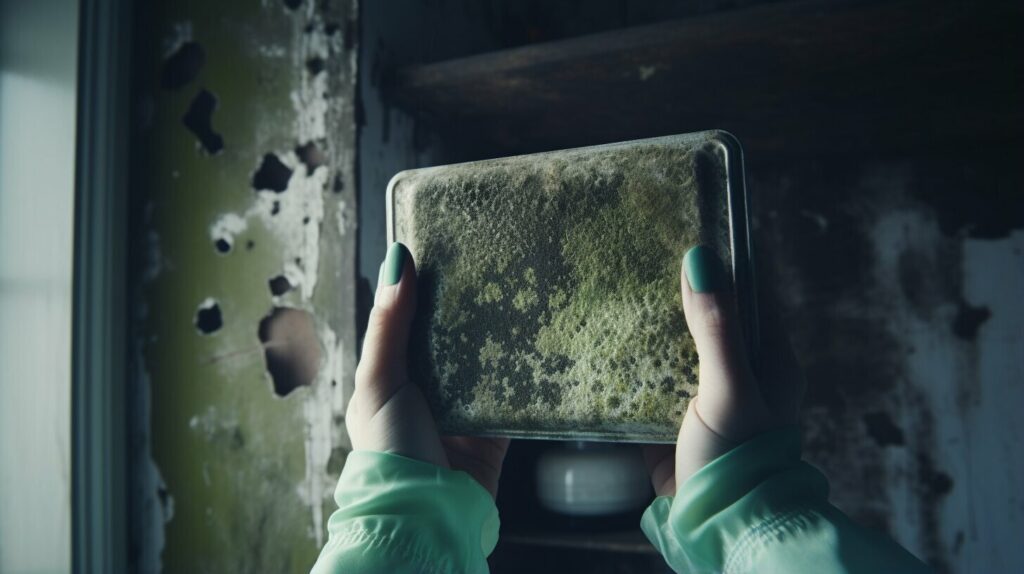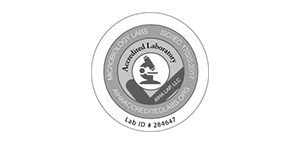
Is there a way to detect mold in the air?
If you’re concerned about mold in your home, detecting it in the air is crucial. Mold can grow anywhere there is moisture, and it can be harmful to your health if left unchecked. Fortunately, there are several ways to detect mold in the air that can help you take steps to prevent its growth and improve indoor air quality.
In this section, we will introduce various methods and tools you can use to detect mold in the air. We will also explore the concept of mold spores and their impact on indoor air quality. By the end of this section, you will have a better understanding of the importance of mold detection and how to go about it.
Key Takeaways:
- Detecting mold in the air is crucial for improving indoor air quality and preventing health risks.
- Mold spores play a significant role in mold growth and can be harmful to your health if left unchecked.
- There are various methods and tools available for detecting mold in the air, such as air sampling and moisture meters.
Understanding Mold Spores and Indoor Air Quality
When mold spores are present in the air, they can have a significant impact on indoor air quality. Mold spores are tiny, invisible particles that can cause a range of health problems when inhaled. They can cause respiratory issues, allergic reactions, and even lead to the development of asthma in some individuals.
Indoor air quality is an essential aspect of maintaining a healthy home environment. Poor air quality can lead to a range of health concerns, including headaches, fatigue, and an increased risk of respiratory infections.
This is why it’s important to detect the presence of mold spores in the air. By doing so, you can take steps to eliminate the source of the mold and improve indoor air quality.
How Mold Spores Enter the Air
Mold spores are lightweight and easily become airborne. They can enter a home through doors, windows, and air conditioning systems. Once inside, they can settle on surfaces and begin to grow, leading to mold infestations.
Mold thrives in damp, moist conditions. Areas in your home that are prone to moisture, such as bathrooms and kitchens, are more susceptible to mold growth. Additionally, homes that have experienced water damage are at higher risk of mold growth.
The Effect of Mold Spores on Indoor Air Quality
When mold spores are present in the air, they can significantly reduce indoor air quality. The spores can become trapped in carpets, furniture, and other surfaces, leading to ongoing exposure for individuals in the home. This can cause a range of health concerns and should be taken seriously.
If you suspect the presence of mold spores in your home, it’s important to take action right away to identify and eliminate the source of the problem. This can help to improve indoor air quality and reduce the risk of ongoing health concerns.
Methods for Mold Detection
If you suspect mold growth in your house, it is crucial to detect it as soon as possible. Fortunately, there are various methods for mold detection that you can use.
Air sampling: One of the most common methods for detecting mold in the air is air sampling. This method involves using a pump to collect a sample of the air, which is then analyzed for the presence of mold spores. This can provide an accurate assessment of the level of mold in the air.
Surface sampling: Another effective method for mold detection is surface sampling. This involves swabbing or tape-lifting a sample from a surface suspected of mold growth and analyzing it in a lab for the presence of mold spores. Surface sampling is particularly useful for identifying hidden mold growth that cannot be seen by the naked eye.
Professional mold inspections: If you suspect a significant mold infestation or pervasive mold growth in your house, it might be necessary to hire a professional mold inspector. These experts can use specialized equipment such as thermal imaging cameras to detect hidden mold growth and identify the source of the problem.
Remember, early detection of mold growth can prevent significant damage to your home and health problems for you and your family. Make sure to take proactive steps towards mold detection to ensure a safe and healthy living environment.
Tools for Mold Detection
There are several tools available for detecting mold in the air. One of the most common is an air quality monitor, which can measure the concentration of mold spores in the air. These monitors can be purchased at specialized stores or online and are relatively easy to use.
Another useful tool is a moisture meter, which can detect excess moisture in potential mold growth areas. This can help identify areas where mold may be likely to grow and allow you to take preventative measures to stop mold before it starts.
Some mold detection kits are available for purchase at home improvement stores and online. These kits typically include an air sampling device, mold culture dishes, and instructions for use. These kits can be helpful in identifying airborne mold spores and determining if the type of mold is harmful or not.
It’s important to note that while these tools can be effective in detecting mold, it’s always best to consult with a professional for proper mold testing and remediation. A professional mold inspection can identify hidden mold growth and provide recommendations for safe and effective treatment.
Preventing Mold Growth and Improving Air Quality
If you are concerned about the presence of mold in your home, there are several preventive measures you can take to reduce the risk of mold growth and improve indoor air quality.
One effective way to prevent mold growth is to maintain proper ventilation. Make sure that your home has adequate airflow, especially in high-risk areas such as bathrooms and kitchens. Opening windows and using exhaust fans can help to reduce moisture buildup and prevent mold growth.
Managing moisture levels is also crucial in preventing mold growth. Repair any leaks or water damage as soon as possible, and ensure that any areas prone to moisture buildup, such as basements, are properly sealed and dehumidified.
In addition to properly ventilating and managing moisture levels, implementing regular cleaning routines can help to prevent mold infestations. Regularly clean and disinfect high-risk areas, such as bathrooms and kitchens, as well as any areas where mold growth has previously been detected.
If you suspect mold growth in your home, it is important to take swift action to address the issue. Professional mold remediation services can help to identify and safely remove mold growth, improving indoor air quality and reducing the risk of potential health hazards.
Conclusion and Final Thoughts
As we conclude this article, we must emphasize the importance of mold detection for a safer and healthier home environment. The presence of mold in indoor air can not only impact the air quality but also pose serious health risks, particularly when it comes to toxic molds.
To protect yourself and your loved ones from such hazards, it is crucial to take proactive steps towards mold detection. As we discussed earlier, there are various methods and tools available for detecting mold in the air, including mold testing and inspections, air quality monitors, and moisture meters.
However, detecting mold is only half the battle. It is equally important to prevent mold growth in your home to avoid such issues in the first place. Regular cleaning routines, proper ventilation, and managing humidity levels can all play a vital role in preventing mold infestations and improving indoor air quality.
In conclusion, we hope this article has provided you with a better understanding of mold detection and its significance in promoting a healthy home environment. By being aware of the potential hazards associated with mold and taking necessary preventive measures, you can ensure the safety and well-being of yourself and your loved ones.
FAQ
Q: Is there a way to detect mold in the air?
A: Yes, it is possible to detect mold in the air using various methods and tools. Mold detection is important for maintaining a healthy indoor environment and preventing potential health risks.
Q: What are mold spores and how do they impact indoor air quality?
A: Mold spores are tiny particles released by mold colonies into the air. They can negatively affect indoor air quality and lead to respiratory problems and allergies. Detecting the presence of mold spores is crucial for ensuring a safe and healthy living space.
Q: What methods can be used for mold detection?
A: There are several methods for detecting mold in the air. These include air sampling and surface sampling techniques, as well as professional mold inspections. Each method has its own advantages and can help in identifying hidden mold growth.
Q: What tools are available for mold detection?
A: Various tools are available for detecting mold in the air. Air quality monitors, moisture meters, and other devices can be used to identify the presence of mold spores. These tools are essential for proactive mold detection and ensuring a healthy environment.
Q: How can mold growth be prevented and indoor air quality improved?
A: To prevent mold growth and improve indoor air quality, it is important to maintain proper ventilation, manage moisture levels, and implement regular cleaning routines. These preventive measures can significantly reduce the risk of mold infestations and create a healthier living environment.
Q: What are the key takeaways about mold detection and prevention?
A: Mold detection is crucial for maintaining a safe and healthy home environment. Identifying potentially toxic mold varieties is particularly important. By taking proactive steps towards mold detection and prevention, you can ensure a better quality of life and protect your health and well-being.
Contact My Mold Detective today at 404-844-4200







